
This week for Flora and Fauna Friday we’re serenaded by a trio of tongue-twisted songbirds, the Mimics of family Mimidae.
Here in South Carolina we have three species of Mimic, the Northern Mockingbird (Mimus polyglottos), the Brown Thrasher (Toxostoma rufum), and the Gray Catbird (Dumetella carolinensis). The trio are common in the Lowcountry and can be found across Edisto Island all year-round. All three are on the larger side for songbirds, subsist off a diet of primarily invertebrates and fruits, often move and feed on the ground, and can mimic the calls of other birds. However, each has its own seasonality, habitat preference, personality, and vocal repertoire.
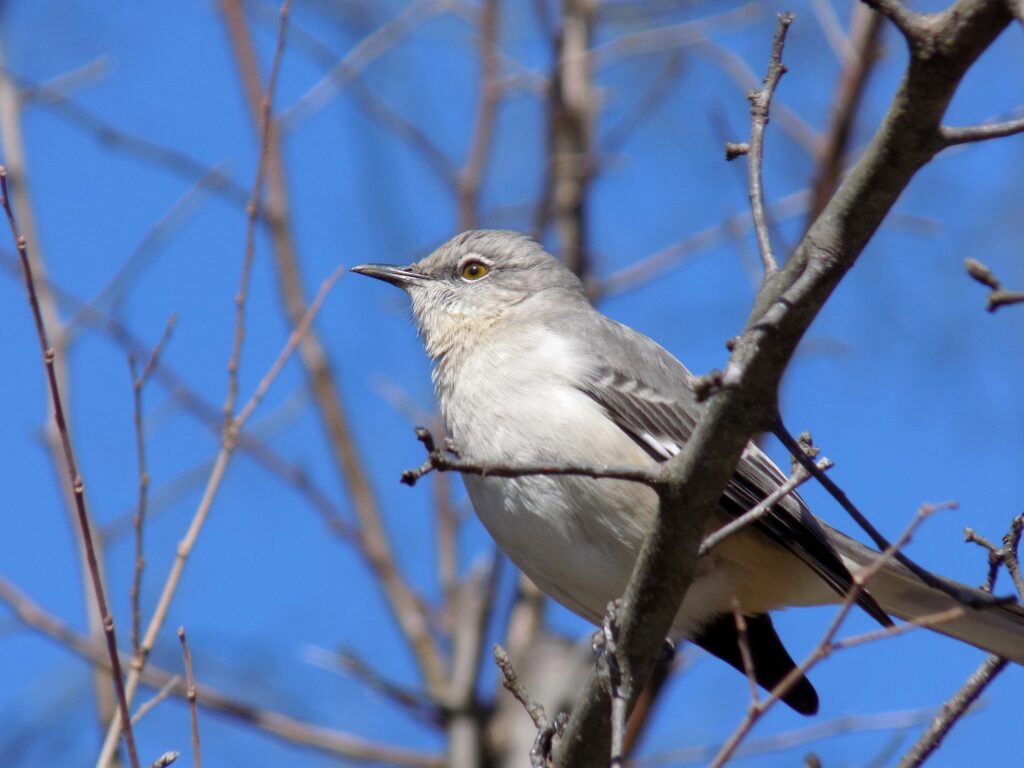
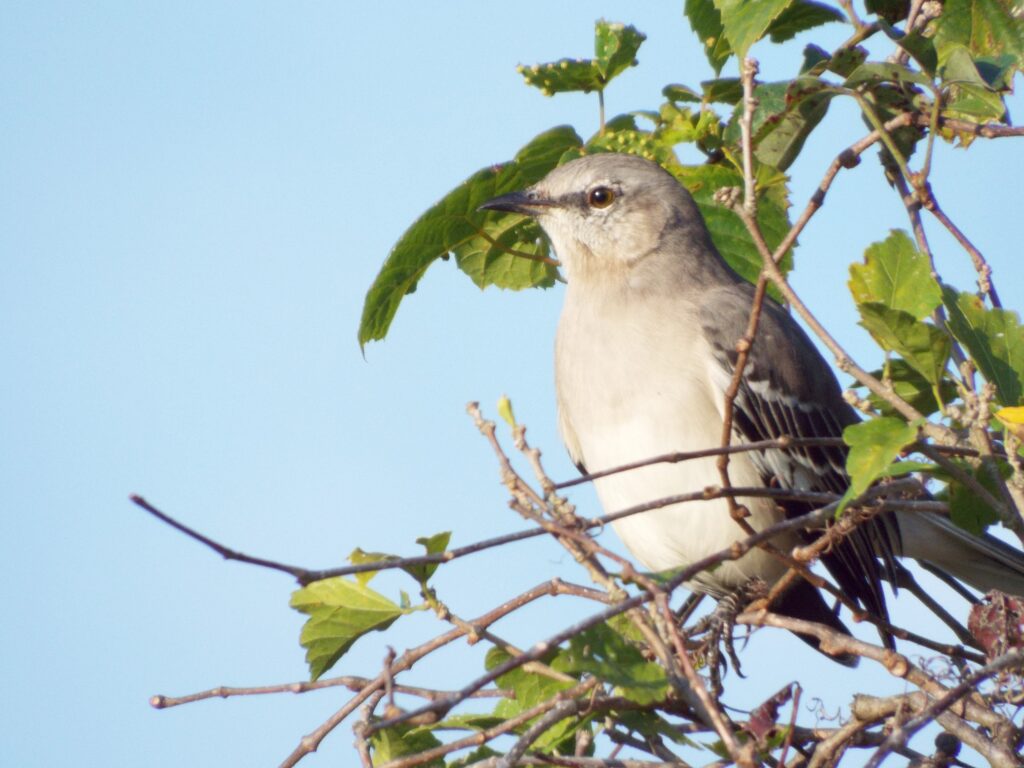
The Northern Mockingbird is by far our most easily seen mimic. They are non-migratory and territorial. Their plumage is a subtle selection of silvery-white, aluminum-gray, and charcoal-black with a brass-yellow eye. The Mockingbird prefers open, cleared habitat and is an accomplished generalist. They’ve taken well to farmland, clear-cuts, suburbs, and urban parks where we keep the grass low and ringed with shrubs, just how they like it. They can often be spotted running along the ground catching bugs or perched atop a palmetto, street light, roof eave, tree limb, or anywhere that’s ten to twenty feet up. Males are particularly territorial and spend much of their time singing away their own custom mixtape of remixed bird songs sampled from the neighborhood or screeching and fighting with other birds. Mockingbirds are our most adept at mimicry and can flawlessly imitate the calls of many species. However, they generally don’t mimic the entire call and repeat the same phrase three or more times in a row before switching subjects. The call of the Mockingbird is a sharp, harsh sound like someone sucking their teeth. Mockingbirds are also especially feisty when it comes to threats and are religious about their harassment of hawks, owls, snakes, and house cats that intrude on their turf.

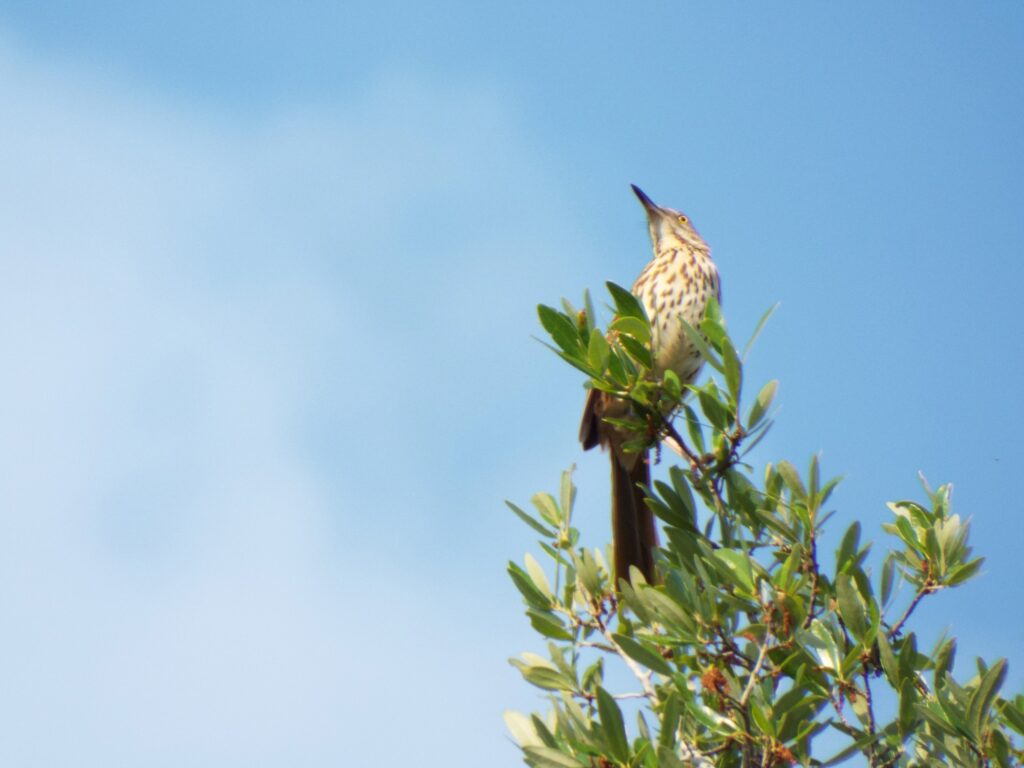
The Brown Thrasher is our largest bodied Mimic. They’re about as common as the Mockingbird in rural areas but their numbers increase in winter as some Thrashers migrate south. The Brown Thrasher is a warm rusty-brown up top contrasted by an eggshell-white breast seasoned by walnut-brown spots and a piercing yolk-yellow eye. They prefer brushy, forested habitats and are much harder to spot in the wild because of it. Brown Thrashers spend much of their time foraging in the leaf litter under dense brush and thickets, particularly Azaleas in residential settings. They’re most easily spotted scratching along the ground or singing way up high in the tree canopy, some thirty to forty foot off the ground. The Brown Thrasher is a decent mimic but their renditions tend to be a bit raspy, cut-short, and low-fidelity, and are usually repeated just one to two times before changing. The call of our Thrasher is that same suck-tooth sound like the Mockingbird but a touch shorter and raspier.
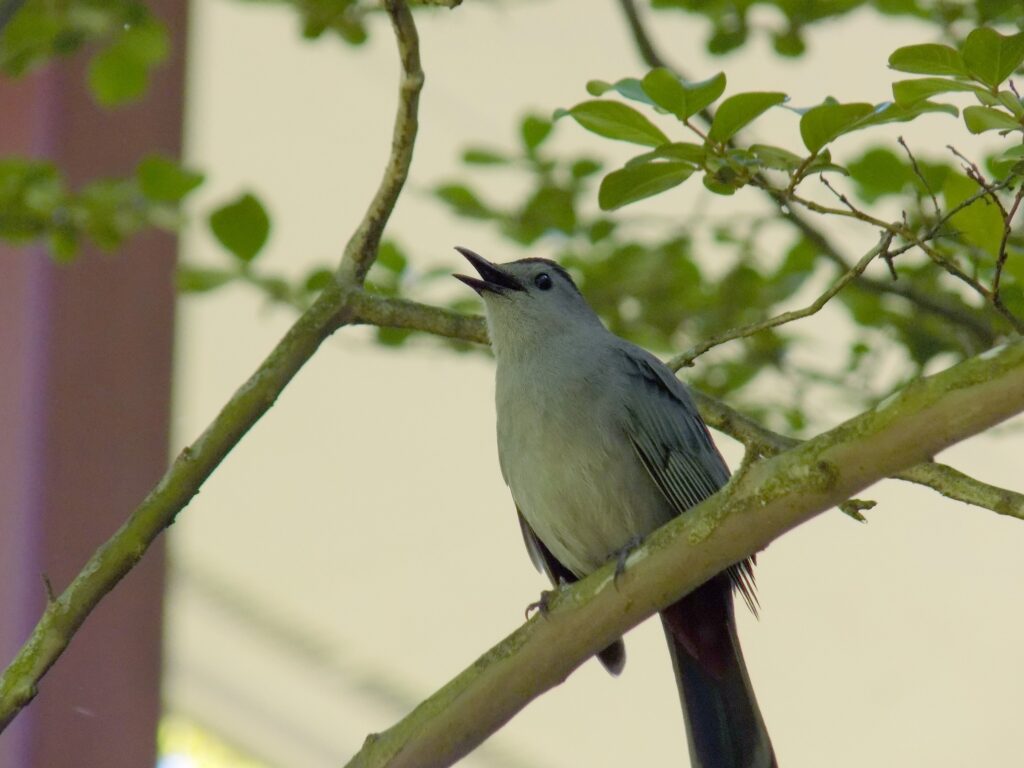
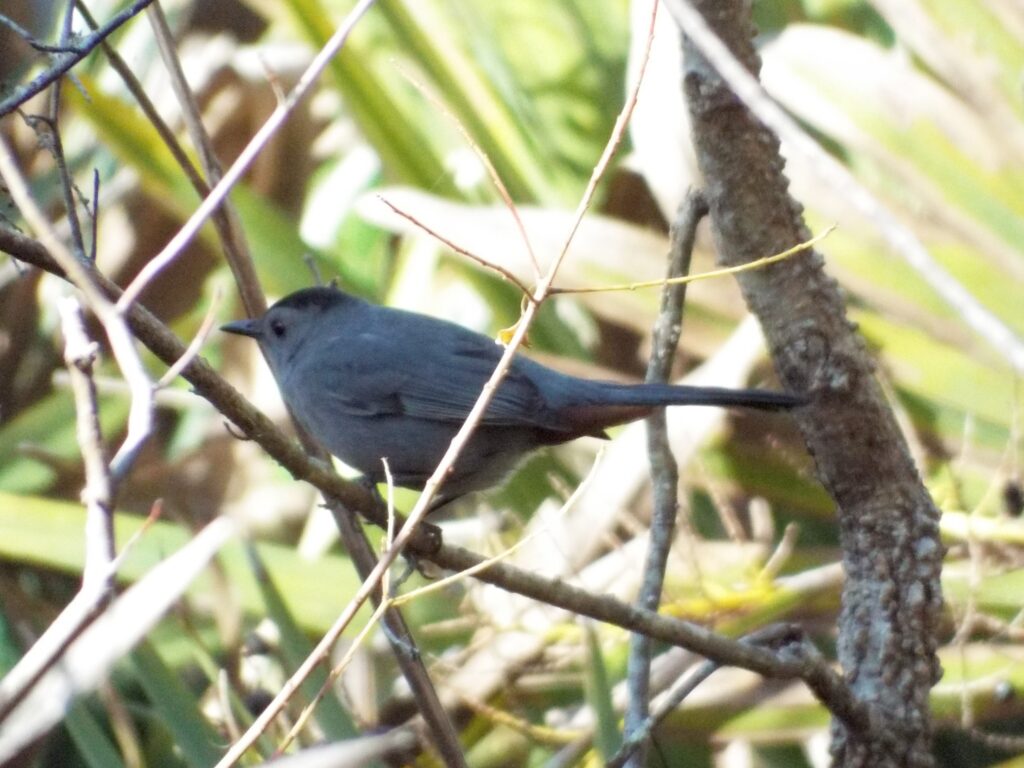
The Gray Catbird is the smallest of the three and the most seasonal. In summer, they are our scarcest Mimic but during winter and over migration they are overwhelmingly our most common. The Gray Catbird is a bluish to phosphate-gray across much of its body with a charcoal-black cap and tail-tip, walnut-brown under-tail, and a nearly black eye. The Gray Catbird is found in dense, wet, brushy habitats like the fringes of saltmarsh, freshwater marshes, field ditches, windrows, thickets, clear-cuts, and brush piles. Catbirds stay low to the ground and rarely leave cover. They’re curious but shy, often moving out to the edges of shrubs to investigate but disappearing back out of sight after a few seconds. Gray Catbirds don’t so much mimic as take inspiration from the world around them. They don’t usually repeat phrases and those phrases and notes are only sometimes reminiscent of other species. The call of the Catbird is a unique and unmistakable begging “meow” of a cat, albeit a cat that sounds a little hoarse.